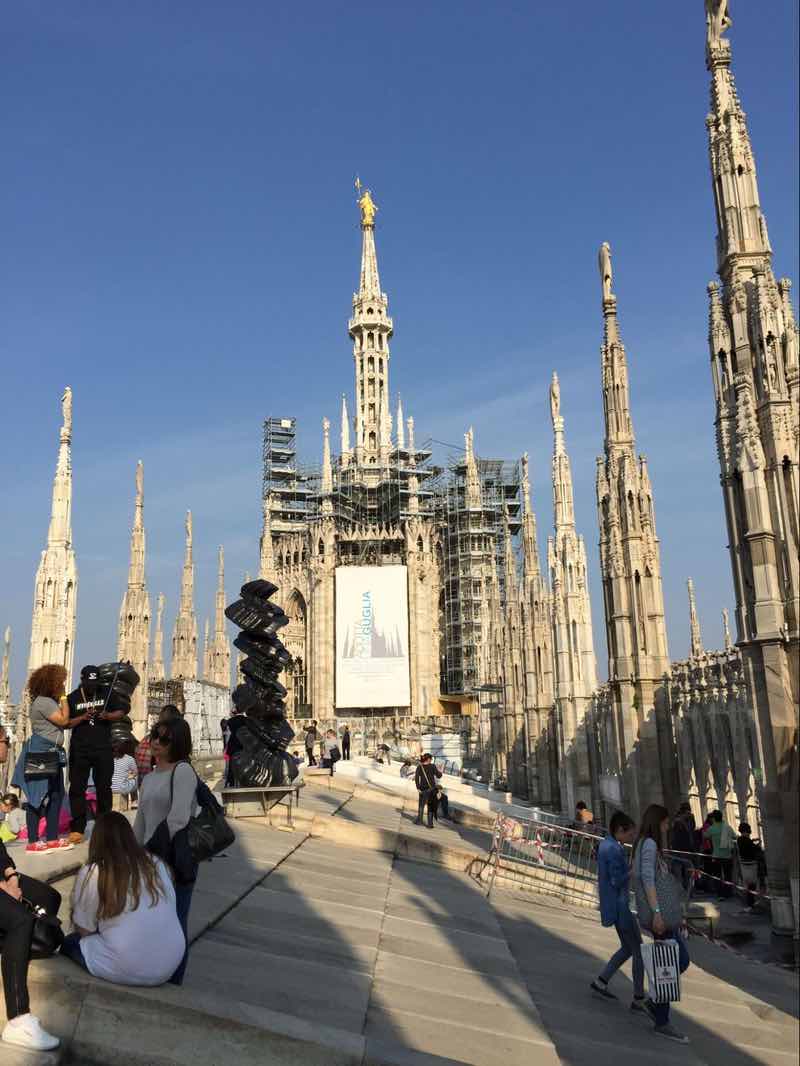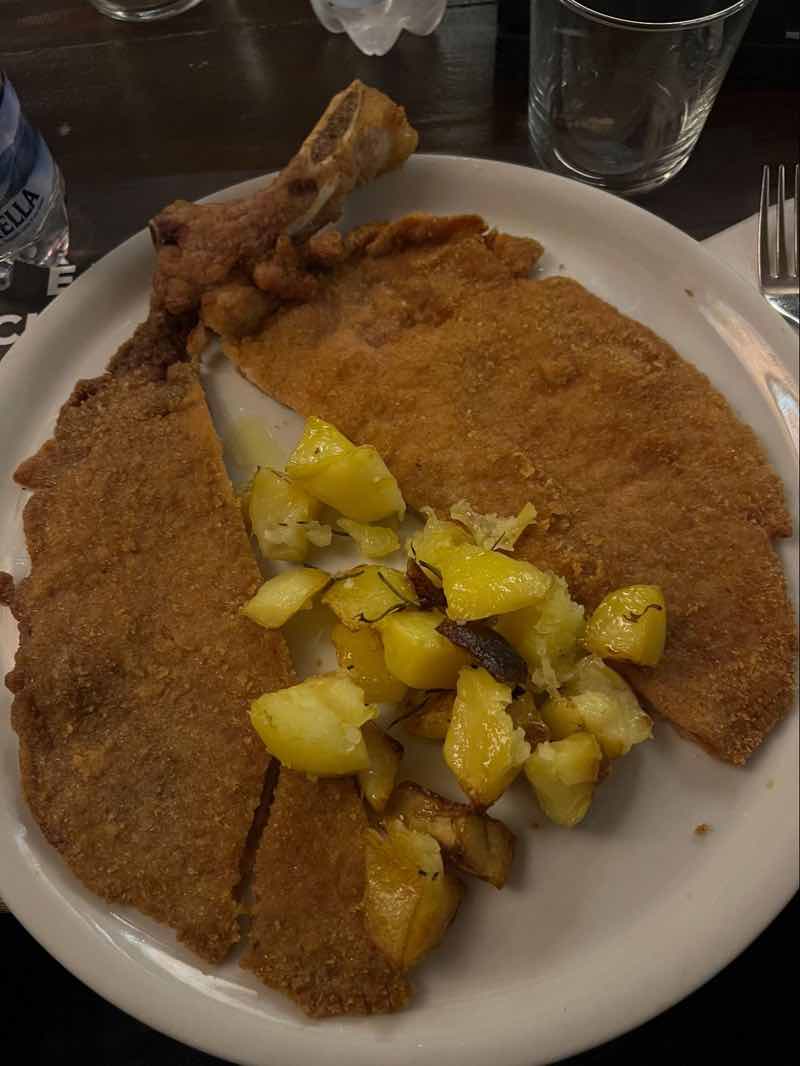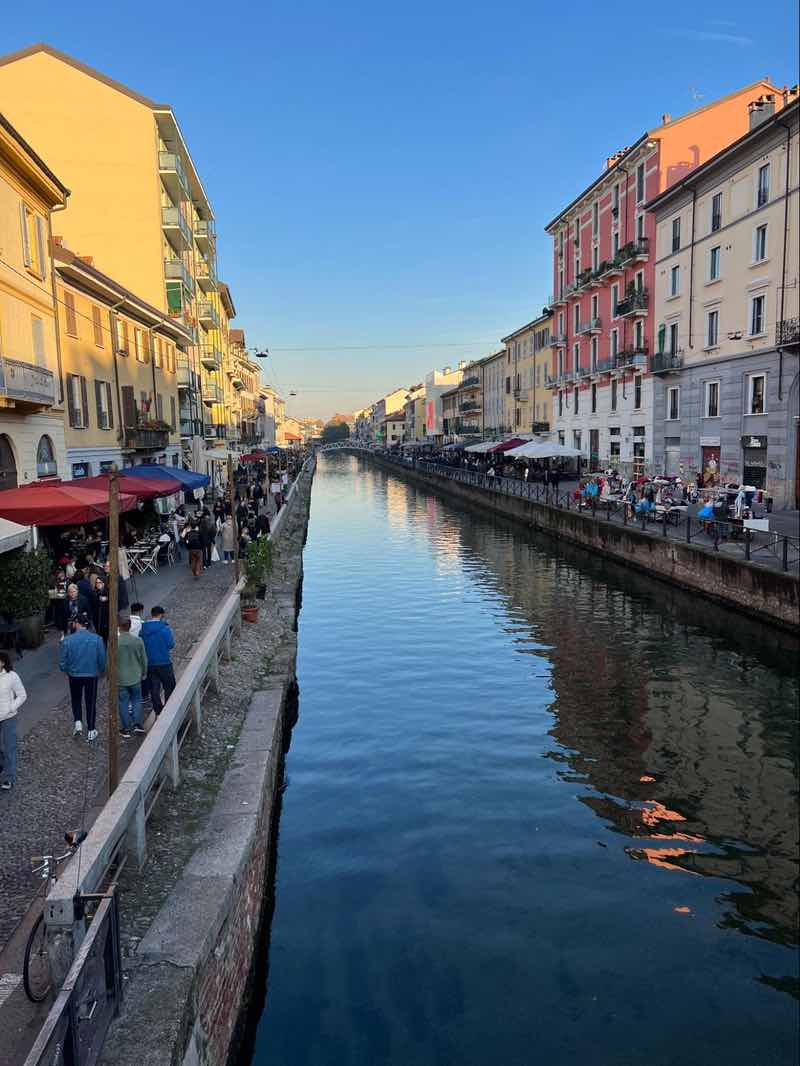Is Milan Worth Visiting? – Amateur Traveler

Table of Contents
Most of us think of Milan as Italy’s fashion hub, but I always wondered, was there more to this city than high-end boutiques and runway shows? As it turns out, Milan surprised me in ways I never expected. Forget the glossy magazines and fashion runways; Milan has a beating heart beyond the catwalk. The sleek skyscrapers, espresso sips, the nightlife – it’s a city that feels truly alive.
Sure, Milan is a buzzing metropolis, but let’s peel back the layers. The charming cobblestone streets, medieval cathedrals, aesthetic bars, and restaurants. Who wouldn’t want to live in or visit such a city? As someone who lives in Milan, I know the answer to that question for me.

The Cathedral: Duomo di Milano
Now, the big question: Is Milan worth visiting? For me, a hundred times yes! Here’s why:
Table of contents: ()

Historical Marvels in Milan
The Cathedral: Duomo di Milano
The first stop is the heart of Milan – the Duomo di Milano. A massive cathedral so huge, I couldn’t help but look up and go, “Whoa.”. This isn’t your average church; it’s a jaw-dropping masterpiece that took six centuries to build and is still being worked on. The outside view of the Duomo is one of the highlights of Milan, and it’s worth going inside as well. This is always the busiest landmark in Milan, so you will need to book or face a very long line.

Roof of the Duomo
I experienced the rooftop view, too. Whether you’re hiking up the stairs or just hopping in the elevator, you’ll get a killer 360-degree look at Milan. It’s not just any view; it’s like an Instagram dream come true. If you are a photographer like me, you shouldn’t miss it. From up there, you can check out the busy streets, and catch a glimpse of the Alps in the distance, and if you look closely, you might spot someone doing some cool rooftop yoga. You’ll feel like you’re on the top of the world, or at least on the top of Milan.

The Last Supper: Da Vinci’s Masterpiece
Checking out Leonardo da Vinci’s Last Supper was a different experience altogether. The key here is to book ahead because tickets disappear quicker than ice cream on a scorching day (Trust me, I talk from experience). Consider going for a guided tour to unravel the hidden messages in the painting. Believe me, Da Vinci had more secrets up his sleeve than a detective novel.
Castello Sforzesco: A Fortress of Art and History
I loved walking through Milan’s historical Castello Sforzesco, a fortress that’s seen centuries of change. It was built in the 15th century to keep things on lockdown, and it turned into a power symbol for the ruling Sforza family. Fast forward to today, and you will find a small museum and art gallery (Pinacoteca) inside the castle. This place is a goldmine for history buffs and art fanatics.
Walk around the big open spaces in the castle and check out the museum and art gallery inside. The Pinacoteca del Castello Sforzesco has artwork from the mid-15th century. The museum features The Pietà Rondanini sculpture, the last piece of work from Michelangelo, left incomplete due to his death.
Museo del Novecento: A Journey through 20th-Century Art
For a taste of modern art, I visited the Museo del Novecento. It’s right in the middle of Milan and is all about celebrating 20th-century art and culture. You’ll see all kinds of art movements like Futurism, Spatialism, and Arte Povera, giving you the lowdown on how Italy’s art scene evolved in the last century.
As you walk around the museum, you’ll come across famous works by Italian artists like Boccioni, Fontana, and Morandi. The Museo del Novecento makes art come alive, letting you feel the energy and changes that happened in Italy’s art world during the 1900s.

Teatro alla Scala
No visit to Milan is complete without experiencing the grandeur of Teatro alla Scala, one of the world’s most famous opera houses. With its history dating back to 1778 La Scala has been the stage for countless opera premieres and has hosted performances by legendary musicians and conductors.

Teatro alla Scala exterior
Milan’s Hidden Gems

Brera District
The Brera District felt like a chill artistic escape. This laid-back neighborhood is like a puzzle of small streets, each hiding fantastic art galleries, cute shops, and quirky cafes. Art lovers, this place is for you; the Pinacoteca di Brera is Milan’s most well-known art gallery, so booking in advance online is advised. You can find masterpieces by Raphael and Caravaggio. Just wander around, soak in the artsy mood, and don’t pass up the chance to grab a cappuccino or a Spritz.
But Brera isn’t just about art on walls and sculptures; it’s also a heaven for gelato lovers. Forget the usual chocolate and vanilla routine; here, you’ve got flavors as wild as Milanese stories. Saffron, balsamic vinegar, and even Gorgonzola gelato are waiting to surprise your taste buds. It’s a flavor adventure you didn’t even know you needed. If you are looking for a recommendation, my favorite in the area is CREMA in Via Fiori Chiari 16.

Photo of the Arco Della Pace – Found at the end of Parco Sempione
Parco Sempione
Get away from the busy city and enjoy the green beauty of Parco Sempione. This big park is like Milan’s backyard, giving you a breath of fresh air in the middle of the city. Walk on paths with trees, find quiet spots, and relax by the lake. Parco Sempione is not just a green place; it also has famous landmarks like the Arch of Peace (Arco della Pace) and the Sforza Castle with museums.

The Vertical Forest (Bosco Verticale) is a Sustainable residential building project situated on the edge of the Isola district.
Isola District
Isola used to be a secret to locals in Milan, but it’s been gaining global recognition and voted the 8th coolest neighborhood in the world by Time Out (highest in Italy). It was once an industrial area that transformed into a gentrified neighborhood. Walk on the stone streets covered in colorful paintings. Visit some superb restaurants and bars, like Deus Cafe or Lucky Bar. If you’re there during the day, try some of the pastry shops. Isola is not just a location; it’s a lively community where creativity thrives. It’s a must-visit for those who want to experience Milan’s unique charm.

Biblioteca Ambrosiana
For people who love books and history, Biblioteca Ambrosiana is a must-see attraction in the middle of Milan. It was founded in 1607 and is one of the world’s first public libraries. It has almost 40,000 manuscripts, including Leonardo da Vinci’s Codex Atlanticus, the most extensive collection of his writings and drawings. You will also find texts written in Latin, Greek, Arabic, Syriac, Ethiopic, and Italian.

Basket of Fruit – By Caravaggio
Attached to the Biblioteca is the Pinacoteca Ambrosiana, an art gallery that started when the library’s founder, Cardinal Federico Borromeo, donated his art collection. The art gallery has works by Da Vinci, Raphael, and Caravaggio’s basket of fruit. You could easily spend a couple of hours here admiring the various works of art.
Navigli
Navigli in Milan is a pretty neighborhood with canals, like small rivers. People like to walk there and enjoy the view. You can find nice cafes, shops, and art places. At night, it’s busy and fun. People love going there to eat, walk, and have a good time.
When the sun goes down, Navigli changes. The water sparkles and the streets get busy. Walk with the locals in the evening, and if you’re lucky, see the sunset make the buildings glow. Now, the special part: aperitivo. It’s not just drinks before dinner; it’s a Milan tradition. Go to any bar along the Navigli and order a Spritz. You will be given a plate and access to a buffet with various meat, vegetable, and pasta dishes. Once you are full, you can take a stroll and enjoy the canal’s atmosphere.

Culinary Delights in Milan
Ossobuco
This Milanese masterpiece is like a meaty symphony for your taste buds. It’s all about tender veal shanks slow-cooked to perfection in a savory broth, creating a flavor explosion that’ll make your taste buds do a happy dance. Milan knows how to turn a simple piece of meat into a culinary masterpiece.
Piadina
Meet Piadina, the Italian flatbread that’s like a pizza’s cool cousin, all thin and crispy, but without the tomato sauce getting in the way. Milanese folks love stuffing it with all kinds of goodies – cheese, ham, veggies – creating a portable feast that you can enjoy while strolling through the charming streets. It’s like having a pizza party on the go! If you want to try this, you can visit La Piadineria. They started in nearby Brescia and have since opened stores all over Italy, but they still make delicious Piadinia.
Polenta
Made from cornmeal, this creamy delight is like the Italian answer to comfort food. It’s versatile, too – whether you’re pairing it with saucy meats or topping it with a mountain of cheese, polenta is Milan’s way of saying, “Hey, let’s make comfort food fancy!”
Gorgonzola
This blue-veined wonder is a cheese connoisseur’s dream. Milan knows how to do cheese right, and Gorgonzola is no exception. Creamy, tangy, and with just the right amount of “oomph,” it’s like the rockstar of the cheese world. Spread it on a piece of crusty bread, and you’re in for a taste bud party.

Orecchio di Elefante
Don’t worry; no elephants were harmed in the making of this dish. Orecchio di Elefante, or “Elephant’s Ear,” is Milan’s playful way of presenting a veal cutlet. It’s thinly pounded, breaded, and fried to crispy perfection. Why the name? Well, take a look at it – its shape resembles an elephant’s ear! Milanese chefs not only know how to cook but also how to have a bit of fun in the kitchen.

A typical Milanese breakfast involves an Espresso and a Brioche (oh, in Milan, a Croissant is called a Brioche).
Espresso
It’s hard not to immerse yourself in the coffee culture here. Milan is considered the home to Italian coffee culture, and there are “bars” serving caffeinated beverages on every corner. In Milan, a traditional espresso costs about 1-2 euros and is drunk while standing at the bar. Ordering a cappuccino after 11:30 am is considered strange by Italians as it’s seen more as a breakfast drink. If you see the word “Torrefazione” written on the store window, they roast the beans themselves. If you’re into your coffee, this is a must.
Fun Fact: The coffee bars in Milan inspired Howard Schultz to develop the idea for Starbucks.

San Siro Stadium
You can’t talk about Milan without mentioning football. The San Siro Stadium is the holy ground for football fanatics. If your visit coincides with an AC Milan vs Inter Milan match, trust me, you want to be there. The energy, the chants, the rivalry – it’s a football spectacle like no other.
Even if there’s no match, take a stadium tour. Walk through the locker rooms, step onto the pitch, and imagine the roar of the crowd. It’s a pilgrimage for any football fanatic, and even if you’re not a die-hard fan, the San Siro’s aura will leave an impression. Just be aware that the stadium tour schedule may change on match days.

Transportation Hacks That Will Help You Navigate Milan Easily
Metro System: Milan’s metro system is your best friend for city exploration. Get yourself a travel pass and navigate Milan like a pro. The metro is efficient, easy to use, and the fastest way to hop between attractions.
Getting this pass is super easy with the ATM Milano app, which is available on iPhones and Androids. Or, you can buy passes from machines at metro stations or authorized sellers, such as newsagents and tobacconists (tabacchi). You can purchase a single, 24-hour, 3-day, or a 10-ticket pass. Most metro stations allow you to use your bank card to travel. However, this is not currently available on trams.
If you’re sticking to Milan’s main area (Mi1 to Mi3 zone), these are your options
- A Single pass (available for 90 minutes) – €2.20
- A 24-hour pass – €7.60
- A 3-day pass €13.00
- A 10-ticket pass – €19.50
These passes cover the ATM transport network: the Metro, Trams, and Buses. If you want to go outside the city, you should download the Trainline app. You can use this app to buy tickets to surrounding areas and beyond; for example, a trip to Lake Como costs €5.20.
Renting a Bike: Feeling adventurous? Grab a bike! Milan has a fantastic bike-sharing scene. Pedal through the city’s streets, explore parks and feel the wind in your hair. It’s a stylish and eco-friendly way to see Milan. You can rent a bike for €4.5/day.
Taxis in Milan: Taxis in Milan are also widely available; however, I would not recommend them if you are on a budget, as they can get expensive. Also, Uber does not exist in Milan the same way it does in other cities. It’s used as a town car service, which means that while they will pick you up in a very nice Mercedes, they are more expensive than traditional taxi services.

Timing is Everything in Milan
1. AVOID August – City in Siesta Mode
Here’s a tip: avoid August. Why? Because Milan goes into siesta mode. Locals escape the city for their summer break, and you might find more closed shutters than open attractions. Plan your visit for a bustling Milan, not a snoozing one.
2. Fashion Week Chaos – Plan Accordingly
Fashionistas, take note. If you’re not here for the runway chaos, avoid Milan during Fashion Week. Hotels are pricier, and the streets are a runway of a different kind. Plan your trip around it unless you’re ready to embrace the fashion frenzy.
3. Milan Furniture Fair Week – Plan Accordingly
Around April, Milan hosts a global furniture fair every year. It’s the largest trade show of its kind and attracts visitors and industry leaders worldwide, unlike Fashion Week, which is also in New York, Paris, and London. This event is exclusive to Milan, meaning hotels are almost impossible to find, and nearly every place worth visiting is booked out. I would avoid this week; it’s simply too busy.

Even though Milan is a big city with a lot going on, it still feels like home. I love checking out the local markets. It’s where you get a taste of real Milanese life.
When it comes to food and shopping, I stick to local places such as outside the city center, and into areas like Sempione, Isola, and Buonarroti. And talking to locals? It’s the best way to blend in. Learn a bit of Italian, strike up a conversation, and you’ll feel like you belong.
Italians see Milan as a busy place compared to other Italian cities. But if you’re used to big cities like New York or London, you might find life in Milan slow and relaxing when you visit. Take your time exploring, enjoy the local flavors, and just soak in the easy pace of life here. It’s pretty awesome.
Final Words
Milan feels like home. It’s a city that shows its beauty when you go to places people don’t usually visit. In the lesser-known parts of Milan, you’ll discover a city that’s more than just known for fashion and business. Milan becomes a beautiful place where the past and present mix and the true essence of the city shows itself to those who are open to exploring beyond the usual. That’s why it is one of my favorite Italian cities.






